An ambitious project from the start for not only producer Nick Wechsler (“Under the Skin”, “Magic Mike”, “Reservation Road”, “Sex, Lies and Videotape”) but for director Michael Cuesta (“Kill The Messenger”), both have delivered films that ratchet up the tension and both know how to tell a story, Wechsler from a producing standpoint and Cuesta with a director’s POV, but AMERICAN ASSASSIN far exceeds the scope of anything each has done prior, and does so to incredible result. And yes, while we see the action fingerprints and gusto of fellow producer Lorenzo di Bonaventura (“Transformers” franchise, “Red”, “Red 2”, “The Last Stand”, “G.I. Joe” franchise) from beginning to end, action alone doesn’t make for film excellence and that’s where the depth and breadth of Wechsler and Cuesta come into play, making this a truly collaborative filmmaking triumvirate.

What Tom Clancy was to espionage spy thrillers in the 1980’s, Vince Flynn is to the genre in the 21st century, complete with black ops, high-level surveillance, portable nukes, and global threats at the hands of individuals as opposed to well-oiled government or counter-government machines. If you are a fan of the Mitch Rapp novels by Vince Flynn, you will love AMERICAN ASSASSIN. If you’ve never read one of Flynn’s spy thrillers, after seeing this film you’ll be rushing to your local book store or logging into Amazon to order the series of books. It’s not often that a film captures the same sense of excitement and intrigue as the printed page but with AMERICAN ASSASSIN it most definitely does and that’s thanks to the vision of director Michael Cuesta.
Stepping out of his comfort zones in tv and film and moving into the action genre, Michael Cuesta brings a depth and breadth to the storytelling of AMERICAN ASSASSIN that makes it a well-done and entertaining film with a perfect marriage of story and action. Coming into the genre, however, the hardest thing for Cuesta wasn’t the actual action or melding story with action, it was “to learn how to manage all the personalities that come in, like Lorenzo di Bonaventura who’s a very, very strong, big personality producer. He’s had a lot of success in the action genre. Then stunt coordinators, second unit directors who do action and who are ex-stunt men. That’s their own world. That’s new to me.” But then Cuesta had to “make sure that [the action] is in line with the script” as to “tone and shots.” Elaborating, he notes that “Unless it’s a specific thing, it’s more about tone and story. Wherever you put the camera, it’s everything. That was the hardest thing for me. I learned a big lesson on this movie.”
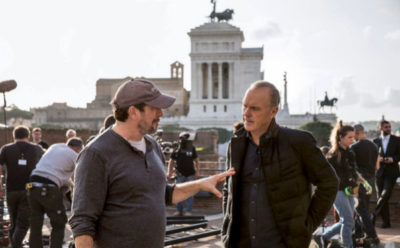
Interesting is what initially brought Cuesta to this project. In short, the opening. “You have to be with this character the whole movie. That was really the approach. It was more subjective. There’s always an objective thing, but how often do I go omniscient in the movie? Only once when he paints the room in red. When he kills all those guys in the room. Mitch is like a panther. There are shots, very trailer-y shots I did. Like when he shoots those guys. He’s like wham, wham! I designed it. We got the dolly and showed Dylan this is what I wanted and we designed it. But it’s inter-cut and it still feels real.”
Complementing the story and the characters is the score by Steven Price, a score tied to the emotionality and complexity of the Mitch Rapp character. Not an action score, Cuesta and Price worked together to avoid action sensory overload and focus on the emotion, the unfolding drama. For Cuesta, “It was always about that. It always had to be about Mitch’s thing. That’s an emotional story. It’s psychological. It manifests into action, but to me, working with Dylan and why Dylan came on board was because we talked about that. He wanted to capture the complexity of what’s going on with this guy and learning how to rein the tigers in, so to speak.”
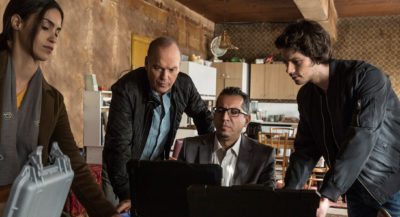
When it comes to Dylan O’Brien, one can hear the almost paternal concern in Cuesta’s voice as he talks about O’Brien and the courage he had to come on board AMERICAN ASSASSIN after a near fatal accident on another film. Believing that O’Brien used his own life and death experience to delve into Mitch Rapp, Cuesta is reflective. “All of a sudden he was in the boat Mitch Rapp was in. Drama. Learning trust. All those things. I wouldn’t go there, but Dylan would bring it up and he ended up with the shorthand about reining it in. That was a big thing for him. That accident traumatized him. He almost died. . . He committed, boy. There’s no tender-footing. He committed. If anything, the one that was babying was me. My son is three, four years younger than him, I was like a father. I was the nervous one. His father was around a lot and his father loved me for that, but at times they had to say, ‘Michael, stop with the anxiety.’ . . . Our safety people and I would go over [the action]. We would spend time. I didn’t care if we go over time. Safety is number one.”

Turning to safety, especially when dealing with the amount of action in a film like AMERICAN ASSASSIN, there is nothing more important than having professionals on hand in front of and behind the camera. For this shoot, some of that expertise came in the form of martial arts and MMA action star Scott Adkins. Merely having Adkins on screen elevates the authenticity of the story and the unfolding action, but here, Adkins served a dual purpose; playing the character of Victor and also working with Dylan O’Brien.
During the first training confrontation between Adkins and O’Brien, in character as fellow CIA agents Victor and Mitch, the tone is immediately set. From the first moment they appear together you realize, albeit subconsciously, Scott Adkins is going full on. He sets the mano-y-mano action bar. But for Cuesta, having Adkins was key because “Dylan needed to be with someone that can pull the punches. Literally, I was casting in London and there was a lot of interest. My stunt coordinator said, ‘What about this guy?’ I’m like, ‘I don’t know who he is.’ He did an audition. It was good. It was solid. The stunt coordinator said, ‘I trust him. Dylan’s a little flinchy. You’ve got to give him someone [experienced].” By pairing Adkins up against O’Brien, there is very little stonework by stuntmen and as the camera shows, the two are engaging in real hand-to-hand fighting. Shooting the entire training fight sequence between the two with Keaton’s Hurley overseeing the session, from initial attack to an unexpected mudbath and everything in between, Cuesta and cinematographer Enrique Chediak kept the camera going. “That scene when they rolled the camera? There was a shot where it goes on for a while, and that’s the two of them going at it and Keaton shoots the gun over them. That was them.”
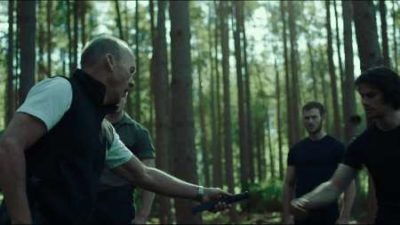
Giving kudos to editor Conrad Buff, there is an all around “cleanness” to cuts. Editing is as rapier and smooth as a samurai sword passing through a piece of silk. Pacing is well executed. Marking the first time that Cuesta has worked with Buff, he quickly rattles off some of the films Buff has cut throughout his career – “Titanic”, “Arlington Road”, “Terminator 2″, “Terminator Salvation”, “Training Day”, “Dante’s Peak” and “True Lies”, just to name a few. “He’s an older gentleman. Conrad’s the quiet, wise one. . .We cut for five, six months. I just left him the other day and I’m like, ‘You mean I’m not going to call you again and say, “Can you please change this?”.’ He’s great.”
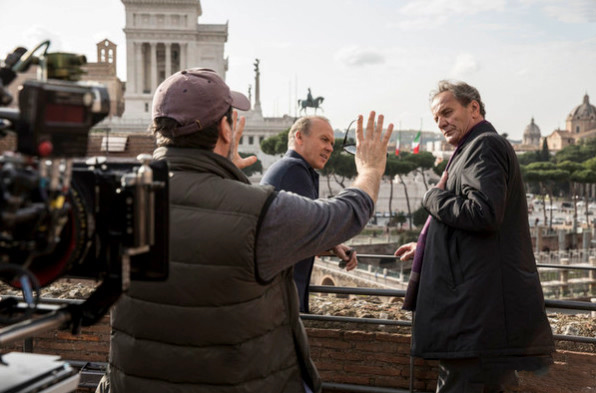
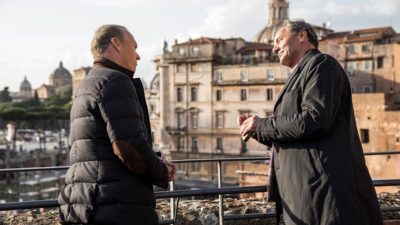
Of course what would AMERICAN ASSASSIN be without the work of cinematographer Enrique Chediak. A storyteller with light and lens, the two developed a visual tonal bandwidth that is rather non-traditional for action films, especially those produced by Lorenzo do Bonaventura who believes in plenty of coverage and a beautiful glossy package. (And there’s nothing wrong with that!) In collaborating with Chediak, Cuesta had one rule. “It’s got to have a point of view. What did Scorsese say? It’s like you direct, not select. I feel like I was directing it, not just covering the scene and doing 50 setups a day. I would do 20 something setups a day, but it’s because I knew how it was going to edit. It wasn’t just about covering a scene.” The proof is in the pudding with judicious use of ECU’s, lighting and atypical dutching of the camera with specific and deliberate metaphoric and emotional design.
“It was about lensing. It was subjectivity. I said, ‘I want to be on Mitch’s shoulders.’ The opening sequence I storyboarded. I sent it to Enrique. That was when I first met him. I explained the opening beach scene is the style of the movie. You want to be with Mitch. It’s a lot of wide lenses. When you use long lenses, it’s usually point of view. It’s a spy movie. Two guys talking on a balcony over there. You shoot them with long lens.” Noting the lyricism as to what is unfolding on the screen, Cuesta admits, “I would design things. There was choreography to everything. Elegance.” But then there are those moments when Cuesta opts for “what makes [a scene] feel real. A little more captured and less designed. I use those techniques. Captured, meaning you give the actors the space.”
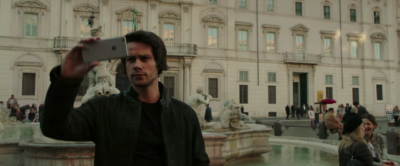
Ironically, out of all the shooting in Rome where the bulk of the film takes place from narrow cobblestoned streets and intimate cafes to requisite ancient ruins, the most hectic scene to shoot in the entire movie was an outdoor sequence in London. “It was a disaster. It was so hard to control the streets of London. They kept controlling [pedestrian traffic] and I’m yelling, ‘Just let people go.’ If you look closely, there are people walking into the shot, but it gave it life. It was the hardest thing to do.”
With AMERICAN ASSASSIN completed and now out in the world, Michael Cuesta has some time to reflect on this filmmaking experience and what made this the “right” film for him to make the leap into the action genre. In short, “Two really experienced producers. One guy that ran a studio. We have different sensibilities but he knows how to promote a movie. I felt in good hands. His partner, Nick, who’s more of my sensibility, comes from the indie world. Nick has great taste, so I felt really supported there. That is important. . . Nick was a really good partner with that. Lorenzo got it, but it’s also making sure the action is covered.”
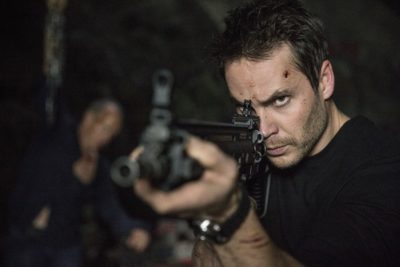
“But I think it was really a way that I knew that I can get a little bit of my thing into this action movie. A little complexity. Good people do bad things, bad people do good things. . . I knew I was going to get there . It took a while, but I knew that I’d get there. I was dealing with studio and also dealing with just the machinations of production. The time, I have. That’s why I knew I’d be able to put my stamp on it a little bit and not just be a hired gun.”
One of the “stamps” Cuesta put on AMERICAN ASSASSIN involves Taylor Kitsch’s character, Ghost. “Ghost’s character, which is the one character I dug a lot, in my pass on the script, I was empathizing with him. He was a bit mustache-twirling originally. The torture sequence was crucial. The whole thing of Hurley being tortured? I put that in the script three weeks before shooting.”
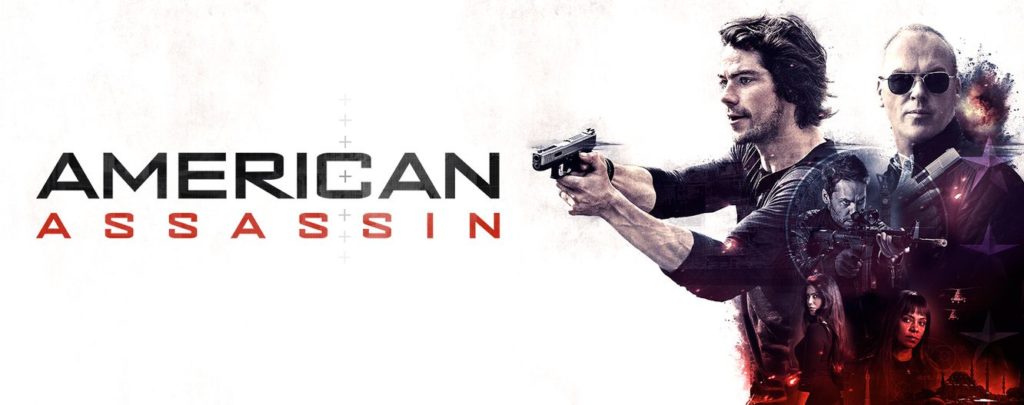
In the end though, it all comes down to the words on the page, the story, the characters. “The hardest thing is character and script. The hardest thing is getting the script right. I could cut this movie for the next two years and make it better and better and better. That’s the hardest part about making movies. The visual part is the easier part. It also comes easier to me because I was a shooter. Shooting action is not that hard. But the harder part is the script. . . People think movies have to be Marvel movies to be in the theater. [I’m] like no, tell a good 120-minute story.”
by debbie elias, interview 07/24/2017












